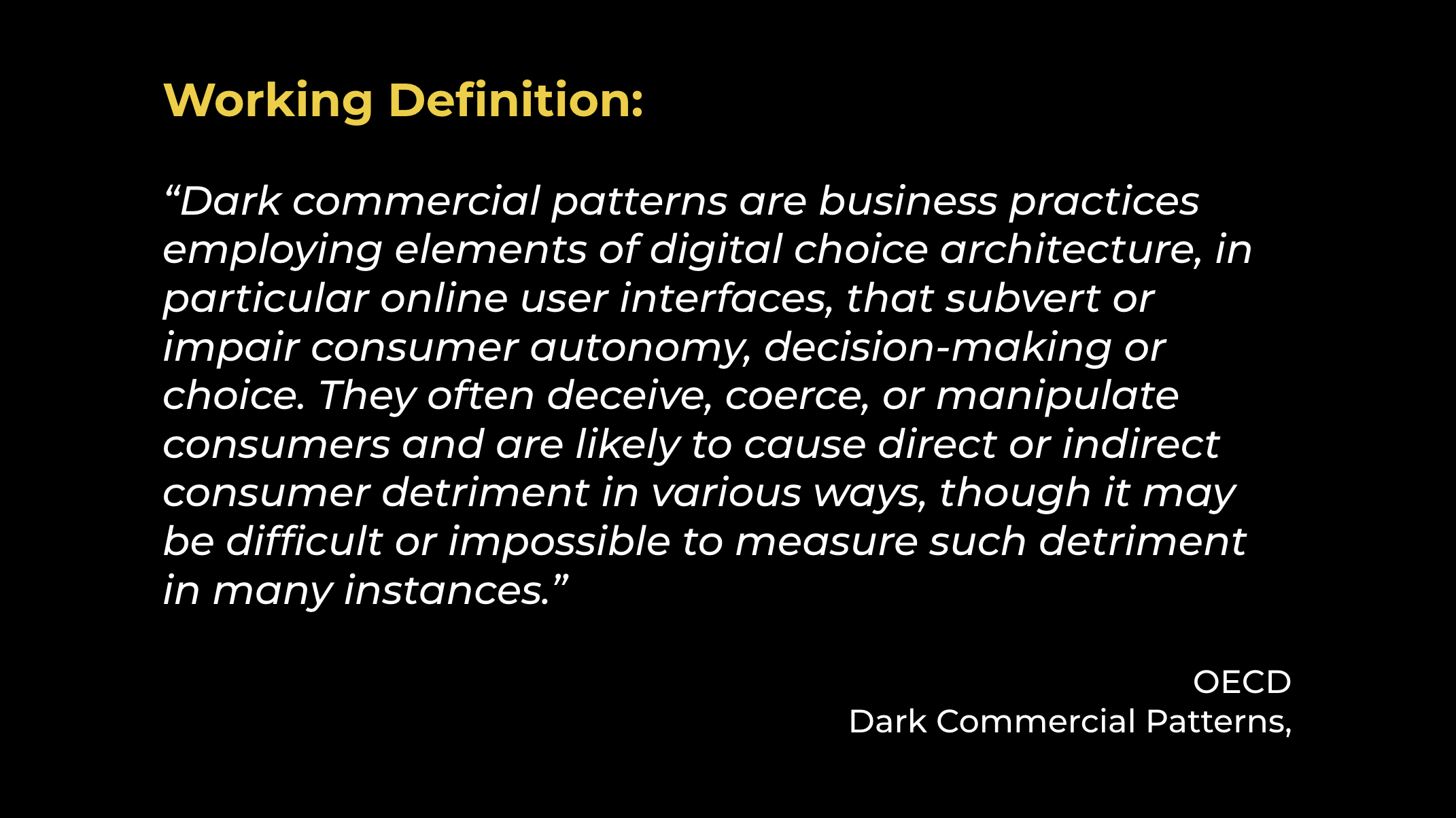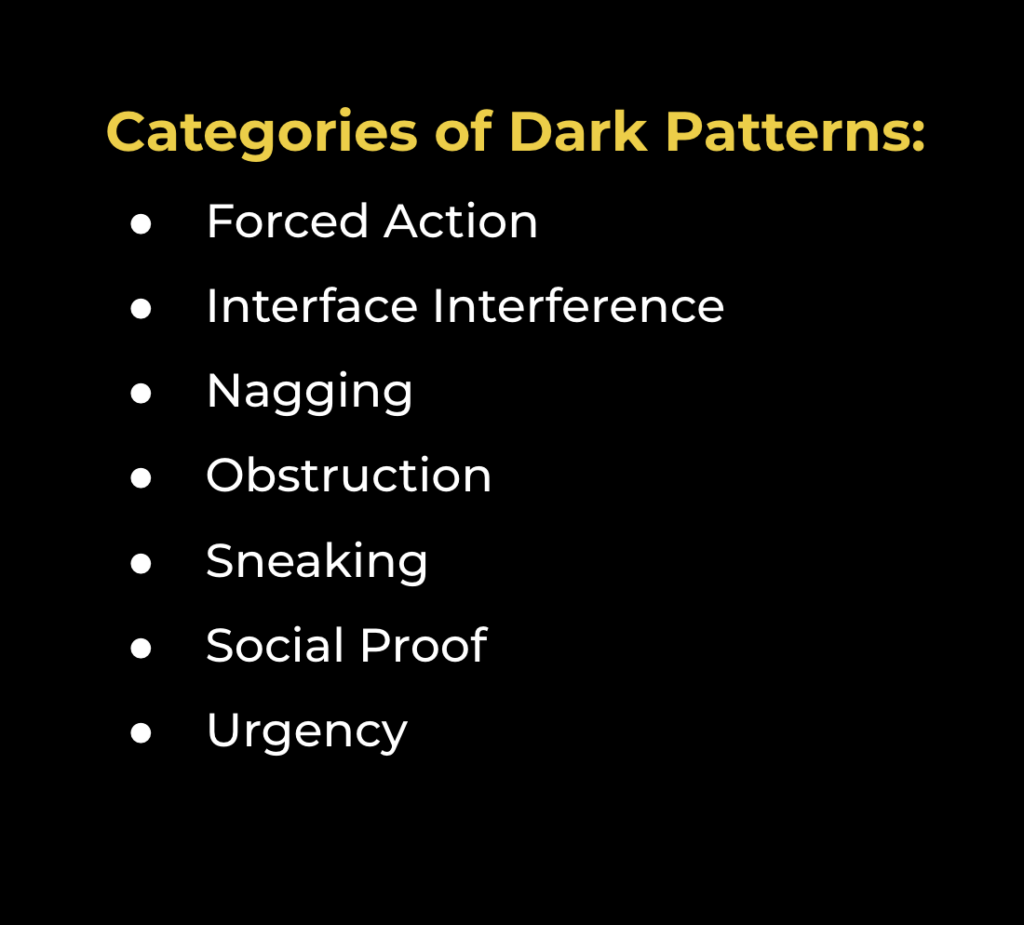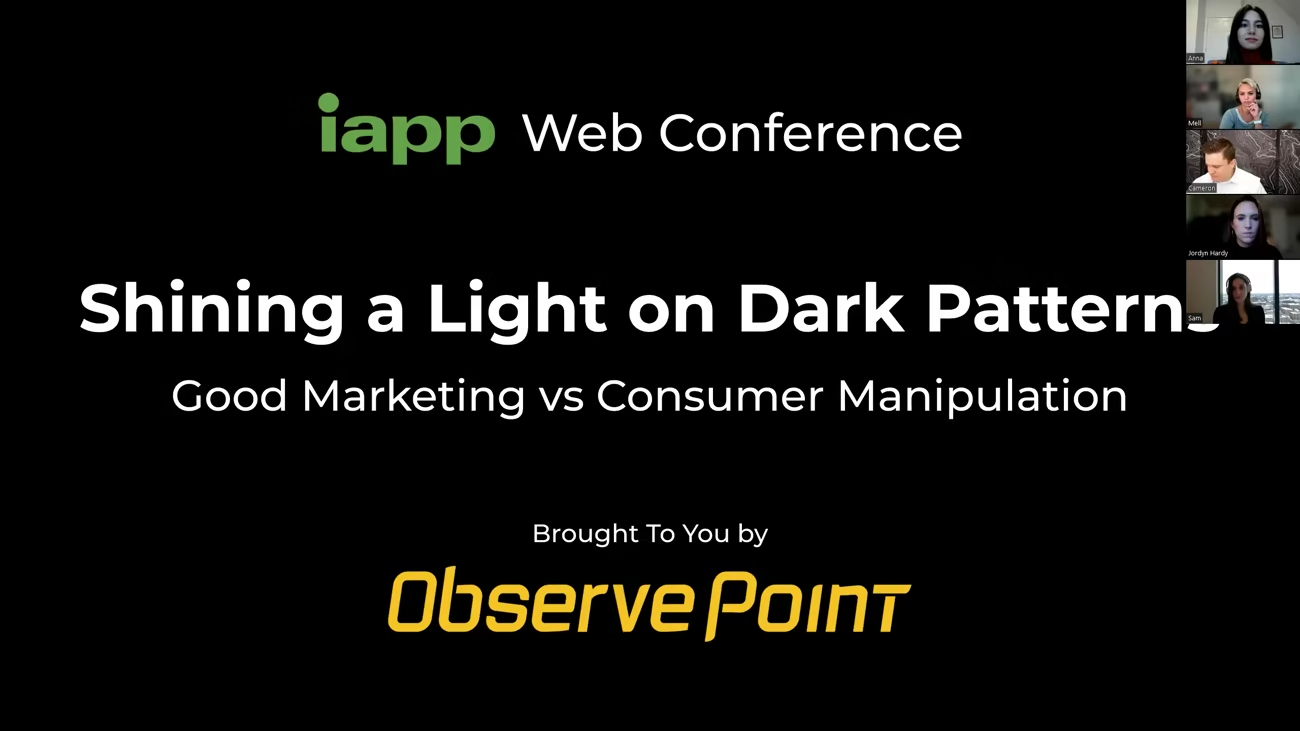IAPP Webinar: Shining a Light on Dark Patterns
Dark Patterns are increasingly becoming top of mind for companies, marketing teams, and consumers alike -- but what are they, and more importantly, where is the line between a “dark pattern” and simply, good marketing?
In this webinar, ObservePoint’s Director of Product Strategy, Cameron Cowan, dives into this exact question along with industry experts Anna Lazzarini, Senior Manager of Digital Operations for MSC Industrial Supply, Sam Valind Senior Data Architect for Business Intelligence at Room & Board, and Mell Santa Lucia, Senior Manager Marketing Privacy Stewardship at Dell Technologies.
Here are some highlights:
What is a Dark Pattern?

This is the OECD’s definition of a Dark Pattern. Admittedly, each panelist had reservations about this definition. While there are valid concerns about the line between good marketing and dark patterns, each panelist agreed that there was potential for this definition to be too overarching, and even potentially, fear-mongering.
Coercion vs Influence
As companies who provide goods or services, it’s a major initiative of each company to increase their sales and adoption of their product. Common marketing practices, such as using social proof, creating a sense of urgency, and even pre-selecting options to decrease the steps a consumer has to take can be considered dark patterns if they are designed to mislead or force a consumer into an action that’s not beneficial to them. In this webinar, panelists discuss how marketers can minimize dark patterns by promoting a culture of transparency, minimizing data collection to what’s truly necessary, and making sure opt-in and opt-out choices are presented in equal, clear, and obvious formats.

“Dark patterns….subvert user autonomy or choice.” - OECD, CPRA/Cal. Civ. Code 1798.140(1)
Keeping Up with Privacy Compliance as a Marketer
2023 is shaping up to be a big year for privacy compliance changes, and while panelists appreciate that as consumers, they are a little intimidated as professionals! There should be major changes to privacy infrastructure on all company websites in the next few years, and it’s incredibly difficult to monitor all those things manually. If you are interested in automating your privacy compliance audits, consider ObservePoint as a helpful solution to assist in your compliance plans.
